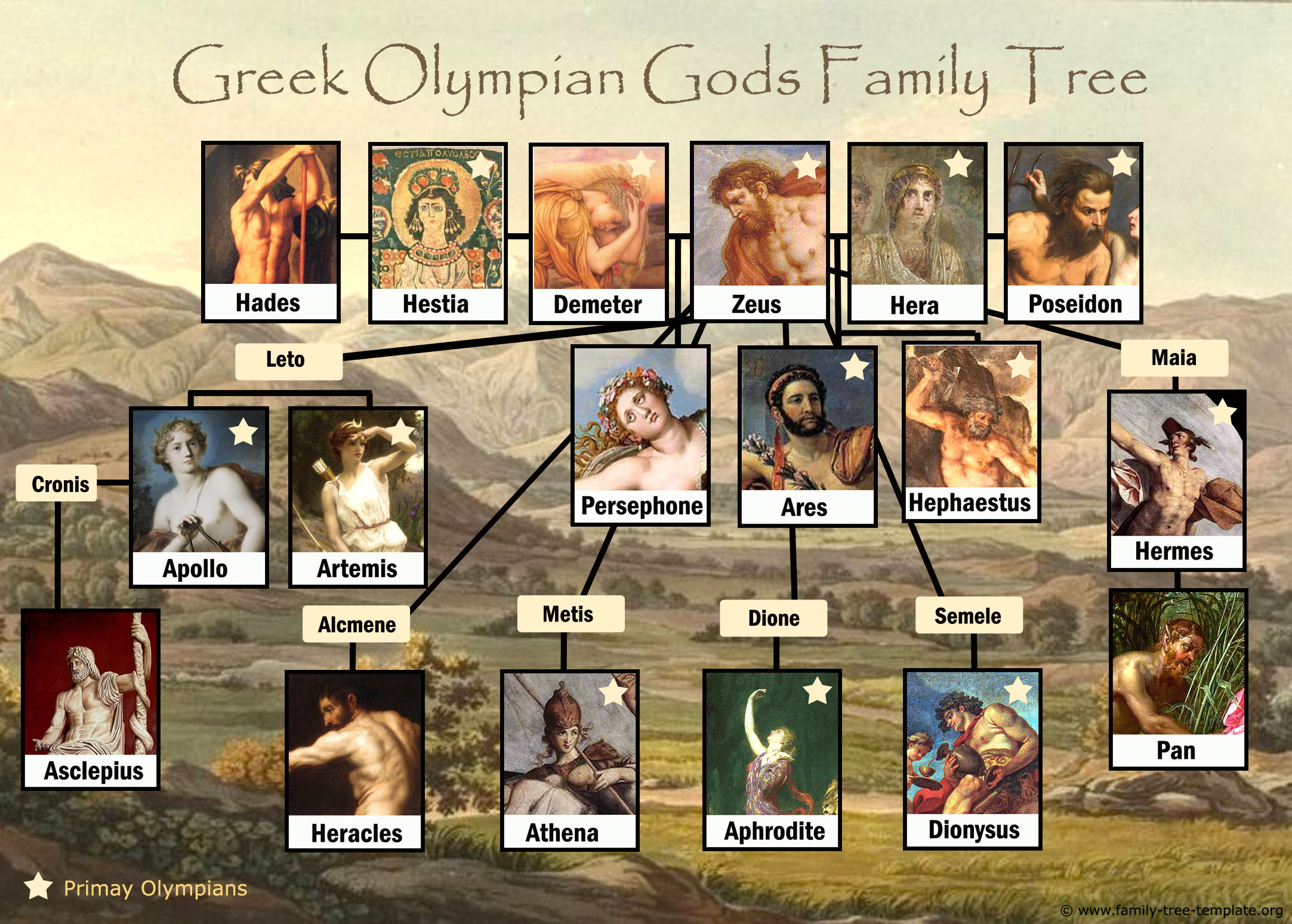- Zeus.
- Hera.
- Poseidon.
- Demeter.
- Athena.
- Ares.
- Apollo.
- Artemis.
Greek Mythology
“Myth has two main functions,” the poet and scholar Robert Graves wrote in 1955. “The first is to answer the sort of awkward questions that children ask, such as ‘Who made the world? How will it end? Who was the first man? Where do souls go after death?’…The second function of myth is to justify an existing social system and account for traditional rites and customs.” In ancient Greece, stories about gods and goddesses and heroes and monsters were an important part of everyday life. They explained everything from religious rituals to the weather, and they gave meaning to the world people saw around them.
Greek Mythology: Sources
In Greek mythology, there is no single original text like the Christian Bible or the Hindu Vedas that introduces all of the myths’ characters and stories. Instead, the earliest Greek myths were part of an oral tradition that began in the Bronze Age, and their plots and themes unfolded gradually in the written literature of the archaic and classical periods. The poet Homer’s 8th-century BC epics the Iliad and the Odyssey, for example, tell the story of the (mythical) Trojan War as a divine conflict as well as a human one. They do not, however, bother to introduce the gods and goddesses who are their main characters, since readers and listeners would already have been familiar with them.
Later Greek writers and artists used and elaborated upon these sources in their own work. For instance, mythological figures and events appear in the 5th-century plays of Aeschylus, Sophocles and Euripides and the lyric poems of Pindar. Writers such as the 2nd-century BC Greek mythographer Apollodorus of Athens and the 1st-century BC Roman historian Gaius Julius Hyginus compiled the ancient myths and legends for contemporary audiences.
Greek Mythology: The Olympians
At the center of Greek mythology is the pantheon of deities who were said to live on Mount Olympus, the highest mountain in Greece. From their perch, they ruled every aspect of human life. Olympian gods and goddesses looked like men and women (though they could change themselves into animals and other things) and were–as many myths recounted–vulnerable to human foibles and passions.
The twelve main Olympians are:
- Zeus (Jupiter, in Roman mythology): the king of all the gods (and father to many) and god of weather, law and fate
- Hera (Juno): the queen of the gods and goddess of women and marriage
- Aphrodite (Venus): goddess of beauty and love
- Apollo (Apollo): god of prophesy, music and poetry and knowledge
- Ares (Mars): god of war
- Artemis (Diana): goddess of hunting, animals and childbirth
- Athena (Minerva): goddess of wisdom and defense
- Demeter (Ceres): goddess of agriculture and grain
- Dionysos (Bacchus): god of wine, pleasure and festivity
- Hephaistos (Vulcan): god of fire, metalworking and sculpture
- Hermes (Mercury): god of travel, hospitality and trade and Zeus’s personal messenger
- Poseidon (Neptune): god of the sea
Other gods and goddesses sometimes included in the roster of Olympians are:
- Hades (Pluto): god of the underworld
- Hestia (Vesta): goddess of home and family
- Eros (Cupid): god of sex and minion to Aphrodite
Greek Mythology: Heroes and Monsters
Greek mythology does not just tell the stories of gods and goddesses, however. Human heroes–such as Heracles, the adventurer who performed 12 impossible labors for King Eurystheus (and was subsequently worshiped as a god for his accomplishment); Pandora, the first woman, whose curiosity brought evil to mankind; Pygmalion, the king who fell in love with an ivory statue; Arachne, the weaver who was turned into a spider for her arrogance; handsome Trojan prince Ganymede who became the cupbearer for the gods; Midas, the king with the golden touch; and Narcissus, the young man who fell in love with his own reflection–are just as significant. Monsters and “hybrids” (human-animal forms) also feature prominently in the tales: the winged horse Pegasus, the horse-man Centaur, the lion-woman Sphinx and the bird-woman Harpies, the one-eyed giant Cyclops, automatons (metal creatures given life by Hephaistos), manticores and unicorns, Gorgons, pygmies, minotaurs, satyrs and dragons of all sorts. Many of these creatures have become almost as well known as the gods, goddesses and heroes who share their stories.
The characters, stories, themes and lessons of Greek mythology have shaped art and literature for thousands of years. They appear in Renaissance paintings such as Botticelli’s Birth of Venus and Raphael’s Triumph of Galatea and writings like Dante’s Inferno; Romantic poetry and libretti; and scores of more recent novels, plays and films.





